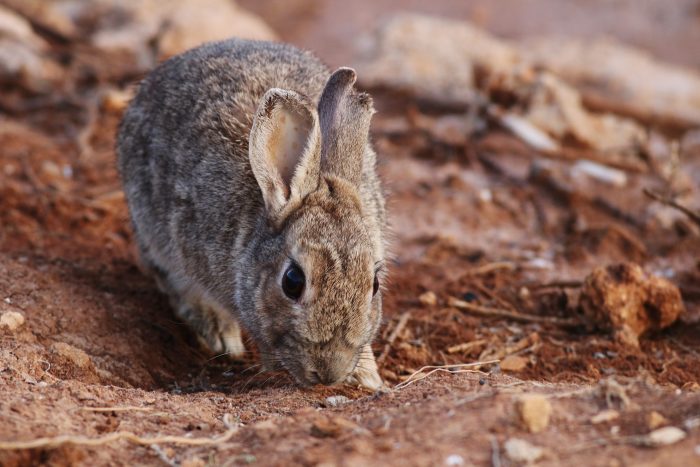On the frontlines is our monthly newsletter section covering the activities of BirdLife Malta’s conservation, policy and nature reserve (Salina, Simar, Għadira and Foresta 2000) teams, together with an update about rare and scarce bird species observed.

Some results from Spring Watch
The spring hunting season 2024 ran from 10 to 30 April. During the morning shifts, our Spring Watch teams were present in 182 sites, and during the afternoon shifts, we were in 158 locations. Our teams collected data on 163 illegalities throughout Malta and Gozo. 26 of these illegalities were reported to the Environmental Protection Unit (EPU) of the Malta Police Force. The main illegalities were the use of illegal electronic callers and injured protected species seen. Our teams witnessed several injured protected birds such us Marsh-harriers, one Osprey, one Grey Heron, one Black Kite and other species. A total of 23 protected species were retrieved and collected by BirdLife Malta and government agencies during the spring hunting season. The more frequently recovered protected birds of prey were Common Kestrel (5 individuals) and Western Marsh-harrier (6 individuals).


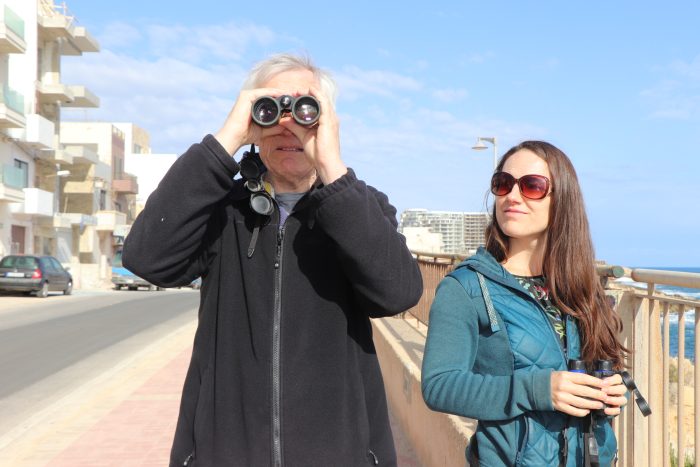
Illegal hunting in May on protected species
Even though the spring hunting season closed on 30 April, our injured birds team kept receiving information about illegal hunting occurring around the islands. In the first week of May BirdLife Malta staff retrieved a Marsh-harrier, a Little Bittern and a Collared-dove, whilst the Environmental Protection Unit collected a Hobby and a Montagu’s Harrier; the government veterinarian confirmed that all these protected species had fallen victim to illegal hunting.



Opening of the rabbit hunting season
The Wild Rabbit hunting season runs from 1 June until 31 August. Since the relaxation of rabbit hunting legislation in 2019, it is even easier now for hunters to use the season as a smokescreen to target birds.
Therefore, BirdLife Malta urges the public to remain vigilant and to report any illegal hunting activity that they see to EPU on 119.
Members of the public can also report to BirdLife Malta on 2134 7645 during office hours or on 7925 5697 outside office hours.
Releases on Comino
At the end of the spring hunting season, we released on Comino (a protected bird sanctuary) several rehabilitated birds that suffered injuries either from wrong captivity or gunshot injuries. We successfully released 21 illegally trapped European Turtle-doves on the back of a report done during Spring Watch in Marsaskala. Two trapped Dotterels and an illegally shot Common Kestrel were released during the same day on Comino.
We also rehabilitated a Little Bittern that had been shot in the leg. Four Collared-doves and a juvenile Sardinian Warbler were also rehabilitated. During the spring migration, we also got cases of stranded birds, including three Little Bitterns, one Siskin, a Common Whitethroat, and an Icterine Warbler. We hope that these birds can safely continue to migrate to their breeding grounds in Europe.
After they recovered from a very serious infection we also released back to the wild two Yellow-legged Gulls.

Salina Nature Reserve
Sightings
Bird migration was in full swing in early May. However, this happened with a marked change in the species that are passing through. We observed that Tree Pipit numbers are decreasing but we’re getting more Whitethroats, Icterine Warblers and Common Reed-warblers. Common Ringed Plovers also arrived with Curlew Sandpipers in the saltpans and Little Bitterns in the reedbeds.
Some rare species also made an appearance with a Little Tern and the first record for Malta of a Franklin’s Gull, which is an American species. The Franklin’s Gull (Maltese name: Gawwija tal-Kanada) was first sighted at our Għadira Nature Reserve when reserve staff were surprised to find the adult bird resting besides an adult Greater Flamingo. It only stayed for around 10 minutes and flew off towards Għadira Bay. Fortunately, the gull was relocated at Salina a few hours later where it was observed and photographed by a number of birdwatchers amongst the resident Yellow-legged Gulls. If accepted by the Malta Rarities and Records Committee, this constitutes the first record ever for the Maltese Islands.
The Franklin’s Gull is a small and dark-mantled gull, slightly smaller than Black-headed Gull and has a similar shape to that of a Mediterranean Gull. It breeds in central North America between SW Canada and NW USA and winters along the Pacific coasts of South America. It is a vagrant in Europe and West Africa.

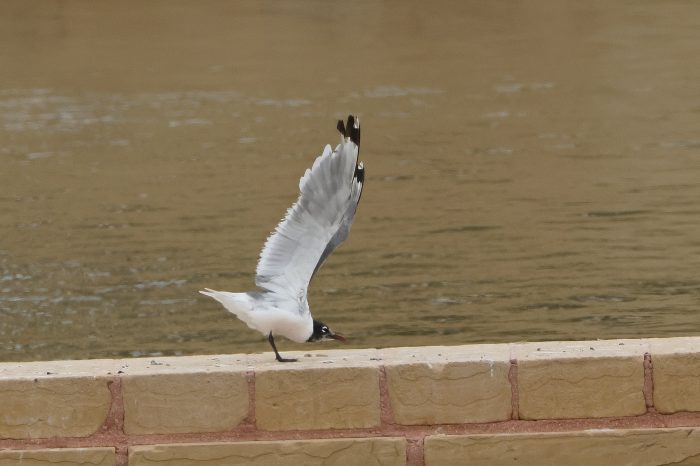

Works
At the Salt Museum, the Superintendence of Cultural Heritage delivered a number of archaeological artefacts and set them up in our brand new glass display cases. With the help of the Superintendence, a number of information panels were designed, produced and will be installed at the museum. Planning started to organise an event to officially open the museum and hold a weekend of events in late July. It is expected that this will involve a number of external entities and should attract a lot of visitors.
Għadira Nature Reserve
Sightings
At the start of May heavy spring migration continued for the first week however migrant numbers dropped by the second week and continued decreasing till the end of the month. Passerine species especially Wood Warblers, Sedge Warblers, Garden Warblers, Common Whitethroats, Great Reed-warblers and Spotted Flycatchers arrived in good numbers. Large flocks of Sand Martins and House Martins were seen throughout the month. Wader species such as Wood Sandpipers, Ruffs, Ringed Plovers, Little Stints and Curlew Sandpipers were mostly recorded. A small number of Temminck’s Stint were also seen.
Amongst heron species, Purple and Grey Herons were occasionally seen in small numbers, while Squacco Herons were frequently recorded throughout the month. Amongst rarities recorded this month was the first Maltese record of Franklin’s Gull which showed up briefly early in the morning on 9 May. A Gull-billed Tern stayed briefly on 25 May.
Four pairs of Little Ringed Plovers nested in May. One pair fledged three young and another pair had four grown chicks by the end of the month. Another pair hatched three chicks in the third week of May but all were lost the same day due to predation. Another pair was incubating by the end of the month.




Works
Bird ringing was carried out 3-4 times weekly with a total of 14 sessions during May. A total of 471 birds were ringed with Wood Warblers, Garden Warblers, Sedge and Icterine Warblers and juvenile Spanish Sparrows and Sardinian Warblers making up the mostly ringed species. Most of the birds were ringed in the first two weeks with over 80 birds per ringing session, following which numbers plummeted to less than 20 birds per session as migration decreased abruptly. Inputting of ringing data was done throughout the month as more data accumulated.
Routine works including removal of invasive African Boxthorn, whilst pruning of the public nature trail and irrigation were carried out as necessary. Filling of freshwater ponds was carried out up to three times weekly as water demands increased.
Simar Nature Reserve
Sightings
The presence of birds on their spring migration was most in evidence during the first three weeks of the month. It was often the most dominant feature of the reserve. The lush green vegetation of Simar which flourishes at this time of year was also another charming feature of the reserve. And this spring, the vegetation in the wetland was characterised by an unprecedented bloom of Ruppia and an extensive growth of the Common Reed forming new areas of reedbeds.
Several interesting bird species were observed during this month. Most unexpected was a Little Tern which is the first record for Simar. Also of interest was the presence of several Squacco Herons, often up to six, with a few staying throughout the month. Little Bitterns were also frequent and, although they are very elusive, they were sometimes seen flying from one feeding area to another. A few Black-crowned Night-herons have been present for most of the month and were often observed feeding at dawn. An adult Grey Heron seems to have made the reserve its home as it has found the required habitat which provides it with both food and shelter.
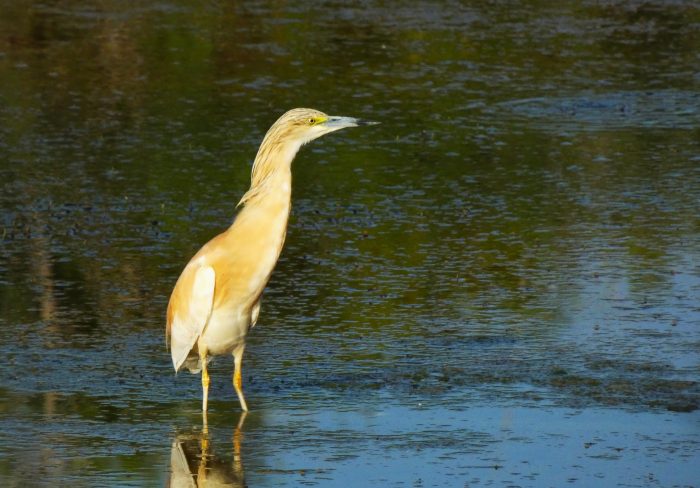

Other species were also present often in good numbers and mainly included reed-dwelling species such as Sedge Warblers and Great Reed-warblers. Also present were Garden Warblers, Spotted Flycatchers, Wood Warblers and Common Reed-warblers. And being in the middle of the breeding season, several pairs of Sardinian Warblers and Cetti’s Warblers were underway in nesting.
Also of interest is the nesting again of the Common Coot and the increase in number of pairs of Common Moorhens. This increase was triggered by the extensive growth of reeds and in fact both species are nesting in these new reedbeds.


Foresta 2000
Sightings
As we transition into summer, Foresta 2000 is slowly becoming paler, a change that begins in the steppe area. Despite a few rainy days in May, this area is becoming more and more yellow and dry, which is a normal part of the cycle. In the garrigue and maquis zones, a vibrant array of flora continues to bloom, including Mediterranean Thyme, Wild Artichoke, and Spineless Caper.
Our avian visitors this month included Swifts, Swallows, and both House and Sand Martins, gliding close to the ground, especially during the morning and evening hours. Blue Rock-thrushes have been observed diligently bringing food to their chicks nestled in the cliffs, while newly fledged Spanish Sparrows and Sardinian Warblers are making their debut flights in the woodland. Spotted Flycatchers were observed in high numbers and even Pied Flycatcher was seen at the end of May.
A Wild Rabbit was spotted, reaffirming the reserve’s role as a sanctuary for diverse wildlife. Dragonflies and butterflies, such as the graceful Blue Skimmer, the ethereal Large White Butterfly, and the Maltese Swallowtail, continue to add their delicate beauty to the scenery.

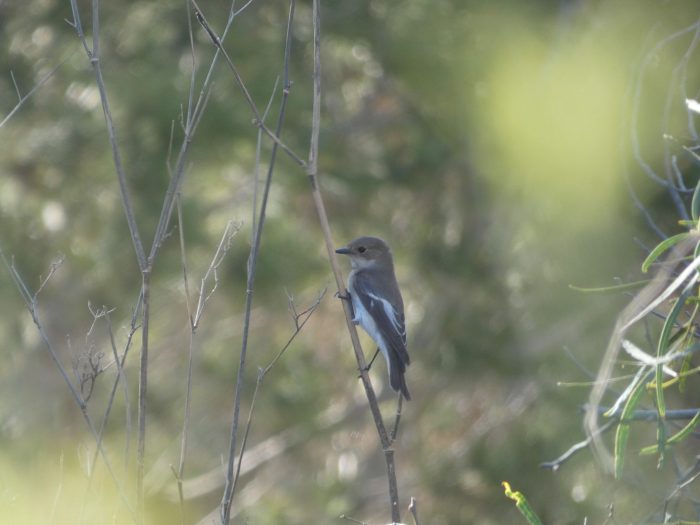

Works
Wobbly benches in both resting areas at Foresta 2000 have been repaired, providing sturdy seating for all. Weekly clean-ups and area control were conducted regularly.
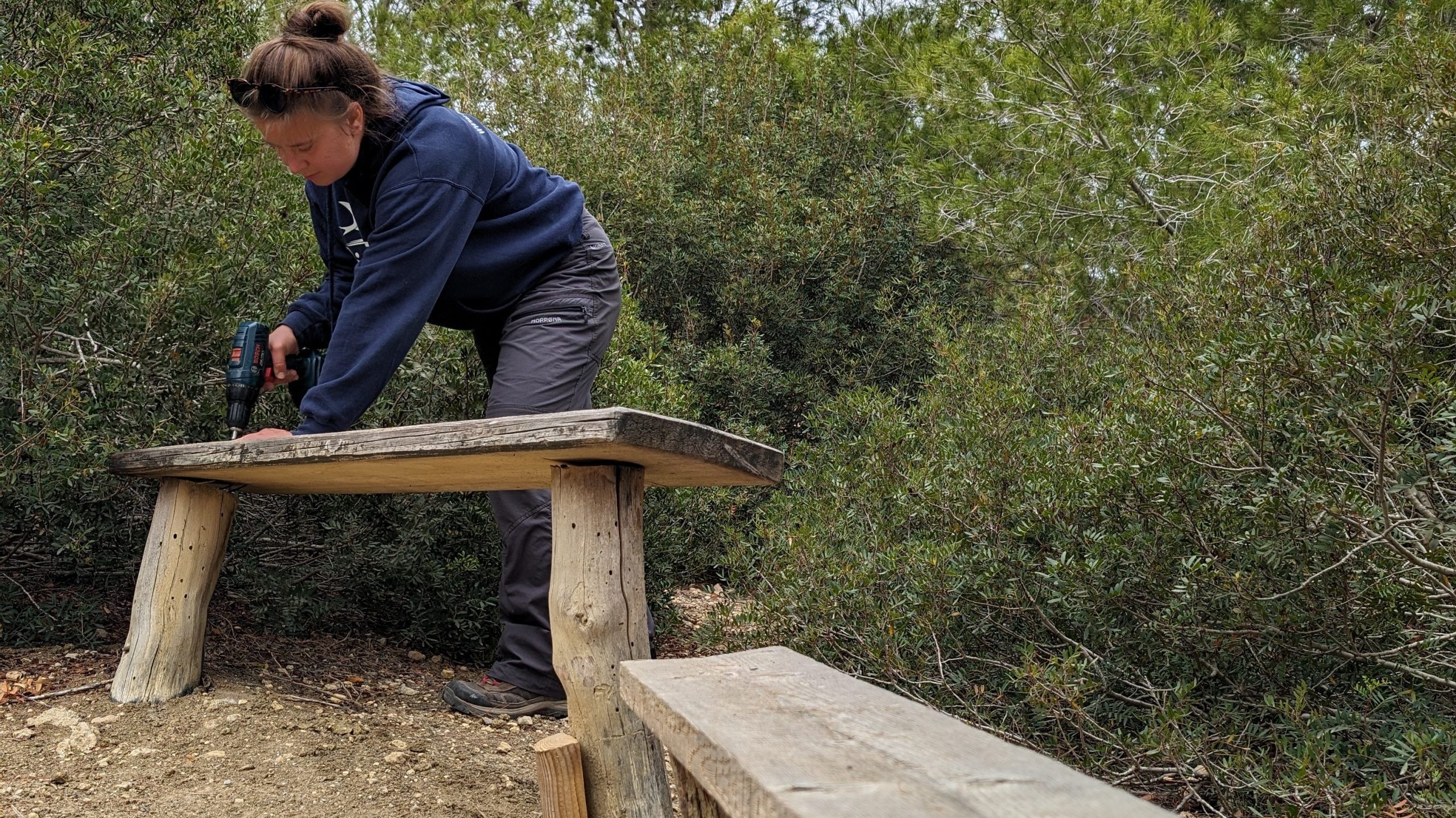

Visits
Last month, Foresta 2000 hosted one of the monthly events organised by BirdLife Malta’s land management team. Participants enjoyed a circular guided botanical walk, exploring the diverse plant life that thrives in our unique environment. Besides listening to the guides, visitors had the opportunity to engage in their own investigations, using identification books to name various plants. More about this in the events section of this newsletter!


Closed for summer! Our Għadira and Simar Nature Reserves are now closed for the summer holidays! Besides there being less birds, it is a time when our breeding birds are given some added protection whilst rearing their young. During the coming months, the reserves’ management teams also take the time to carry out some maintenance work on the sites improving them both for nature and visitors alike. Come September, and therefore at the onset of autumn migration, we will look forward to welcoming you once more to our sites! Foresta 2000 and Salina remain open throughout the summer.

Objection to development at Fort Chambray
Fort Chambray in Gozo, an 18th Century site, is destined for a large-scale development project including an aparthotel, underground parking, retail outlets, restaurants, and outdoor catering areas. BirdLife Malta formally objected to this development due to several environmental concerns.
Our primary concern is the development’s proximity to the Natura 2000 site, Żona fil-Baħar ta’ madwar Għawdex (MT0000112), just 130 meters away. This protected area is vital for the Yelkouan Shearwater and Scopoli’s Shearwater, both listed in Annex 1 of the Birds Directive of the European Union. Noise pollution and any poorly designed lighting from the development, combined with existing disturbances from Mġarr Harbour and ship traffic, pose significant threats to these seabirds. Artificial lights can disorient fledglings and cause grounding, leading to high mortality rates, and disrupt breeding patterns, potentially affecting the viability of these colonies. Protecting this sensitive environment requires reassessing the development plans to minimize ecological harm. Read our objection here.


New Thermal Treatment Facility proposed
BirdLife Malta reviewed the Project Description Statement Report for the new Thermal Treatment Facility being proposed to be built in the ECOHIVE Complex in Naxxar, and provided several comments for the consultation process. While we appreciated the outlined environmental impacts and mitigation measures, we raised concerns about several projected impacts.
Aerial emissions are likely to have a major adverse impact rather than the stated moderate impact. These could significantly affect ecological and socio-economic conditions in downwind areas. We suggested a thorough comparison of the best available abatement technologies, explaining the choices made. We also stressed on the importance of using detailed air dispersion models to identify receptor sites for aerial pollution and their impacts, including particulate matter accumulation in plants, soil, and water bodies. Up-to-date baseline data should be collected from a well-defined study area, particularly focusing on agricultural land, water bodies, Natura 2000 sites, and endangered species habitats.
We also emphasized that both construction and operation phases need careful assessment, especially concerning light pollution, noise, and vibration, which could affect local residents and wildlife. Moreover, the Environmental Impact Assessment (EIA) should include the risk of environmental accidents and plans for managing brief emissions and chemical spills.
Ultimately, BirdLife Malta supports the new thermal treatment facility, provided the best technologies, rigorous environmental monitoring and mitigation measures are implemented to protect the environment and public health. Read our comments here.

Rare Collared Pratincole at Salina
The Collared Pratincole (Maltese name: Perniċjotta) is an exercise in elegance: slim, streamlined, long-legged with chic subdued tones and what looks like professionally applied face make-up. It’s equally elegant in flight, looking very much like a large swallow complete with forked tail – no wonder the Father of Taxonomy Linnaeus grouped it with the swallow family. It’s not a swallow, though, but a wader that spends much of its time near water. But pratincoles don’t poke about in the mud for worms as most shorebirds do, but rather snap up insects from the air – yes, just like swallows again! The Collared Pratincole is a rare visitor to Malta and isn’t seen every year, but one turned up in May at BirdLife Malta’s Salina Nature Reserve. It spent some time resting and preening, then resumed its migration north to nest, possibly somewhere in Sicily.
Great Snipe seen in April
Whilst the presence of certain bird species tends to be pretty obvious, that of others might be extremely discreet. Having a cryptic plumage is a very effective measure used by a number of birds to minimise the risk of predation. Having the habit of remaining concealed in thick vegetation is another effective way to remain unnoticed. If a species manages to combine these two techniques, the odds of being noticed become even more slim. Amongst such species one can surely mention the Great Snipe (Bekkaċċ ta’ Mejju), a regular but rather scarce visitor that is very challenging to spot. Unfortunately, despite all its survival techniques, the Great Snipe is still very vulnerable to dogs that are urged by their owners to search the water courses in our valleys to flush such species.
Ortolan Bunting seen at Xrobb l-Għaġin
The Ortolan Bunting (Maltese name: Ortolan) is one of those species that appease both the eyes and ears of the lucky persons who manage to get a glimpse of it. With its streaked brown plumage and a splash of yellow on its face, it’s always a charming sight to watch. Unfortunately, the number of sightings of this species in the Maltese Islands are on a sharp decline, making any occurrence even more special. The conservation status of the Ortolan Bunting is a matter of concern due to various threats it faces across its range. Habitat loss, primarily through agricultural intensification and urbanization, is a significant issue, as it diminishes suitable nesting and feeding grounds. Additionally, despite being classified as a protected species, wild Ortolan Buntings are unfortunately still trapped to this day, both locally and in other countries.
Scarce Ruppell’s Warbler sighted in Malta
The Ruppell’s Warbler (Bufula tal-Pavalor in Maltese) is an attractive small passerine found in certain parts of Europe, particularly around the Mediterranean basin and North Africa. Named after the German zoologist Eduard Rüppell, it has a striking plumage characterised by a distinct whitish belly, and a contrasting black face mask in males. Females have a more subdued appearance. Although they are generally elusive, their presence can be detected through their distinctive calls and occasional flashes of bright color amidst the foliage. Ruppell’s Warblers primarily feed on insects, foraging actively among dense vegetation, and occasionally supplement their diet with berries. They are particularly scarce in the Maltese Islands, yet occasionally we do have some individuals that venture to our islands. Its resemblance with the much commoner Sardinian Warbler makes it even more challenging to spot, as one might easily overlook its presence.


Credits
Words: Charles Coleiro, David Attard, Justine Borg, Manuel Mallia, Marcella Giornetti, Aron Tanti, Nathaniel Attard, Vera Tokmakova.
Photographs: Aron Tanti, Charles Coleiro, Cinzia Mintoff, David Attard, Manuel Mallia, Mario V Gauci, Murat Gelir, Vera Tokmakova, James Aquilina.


